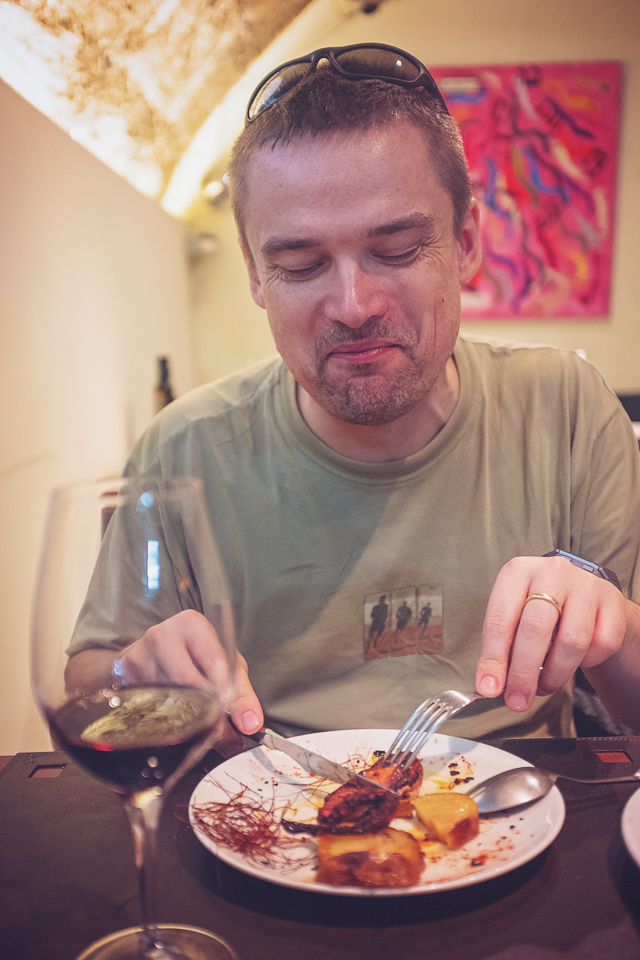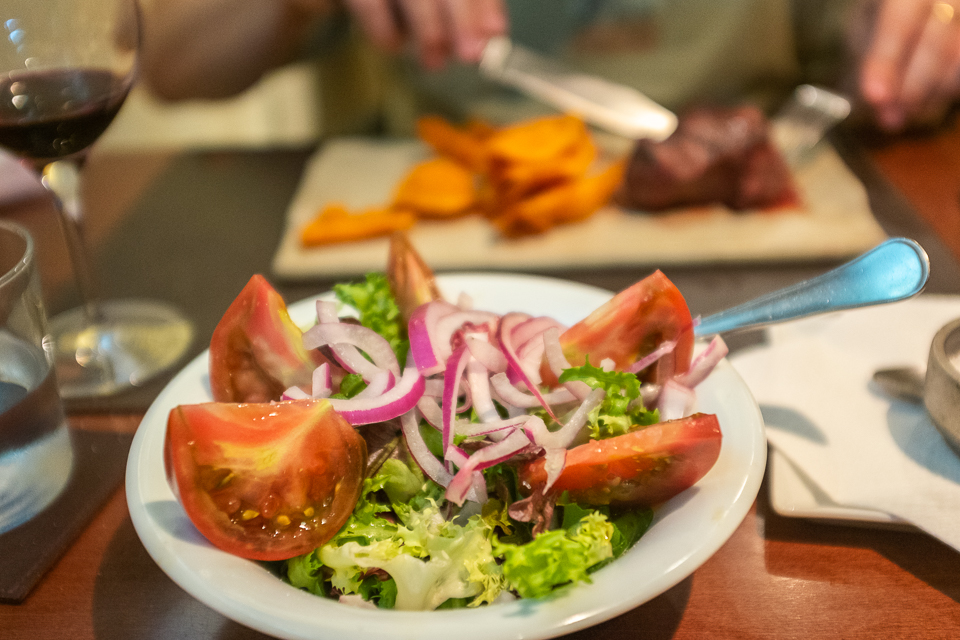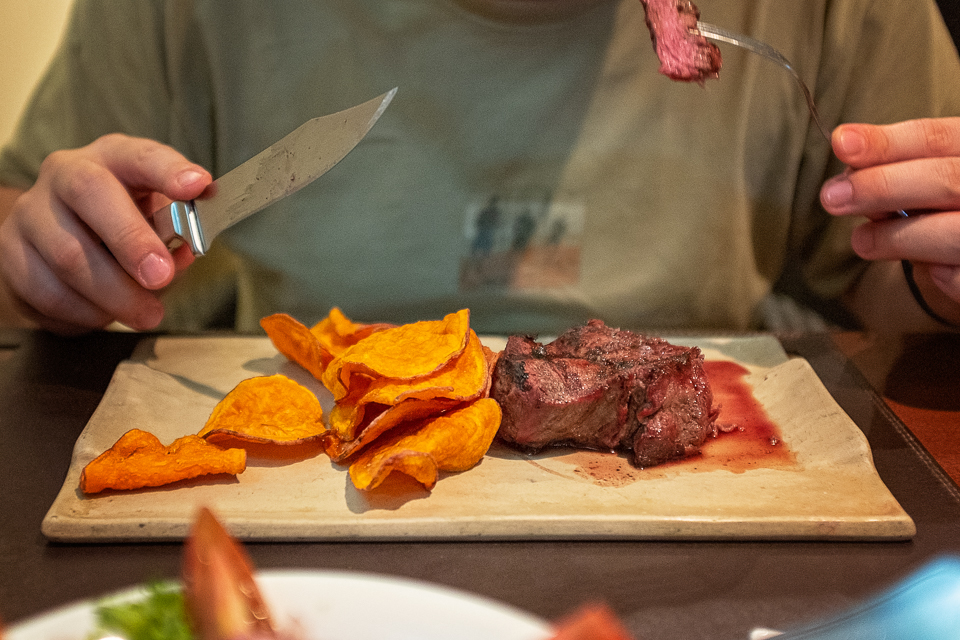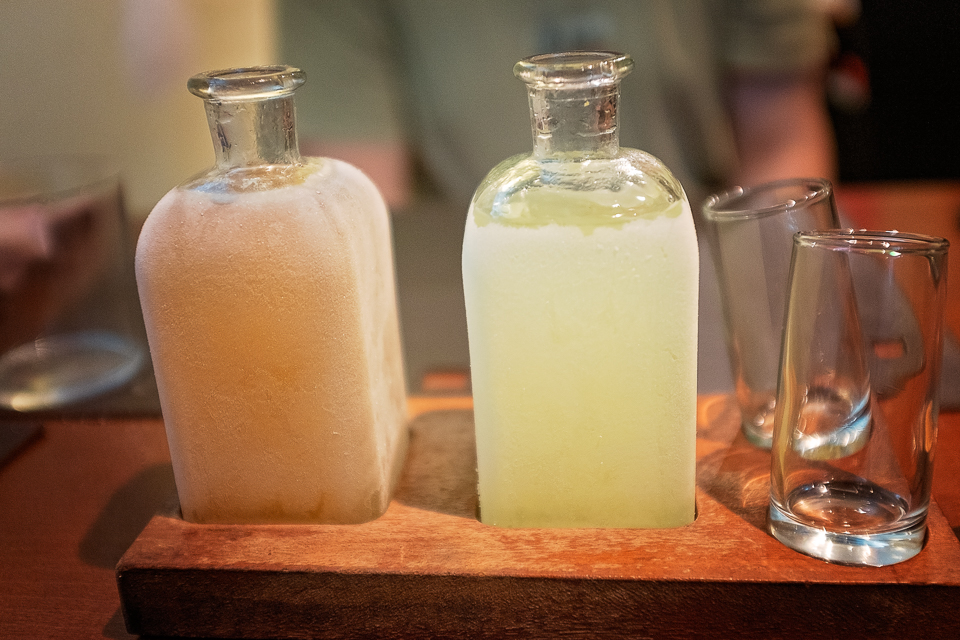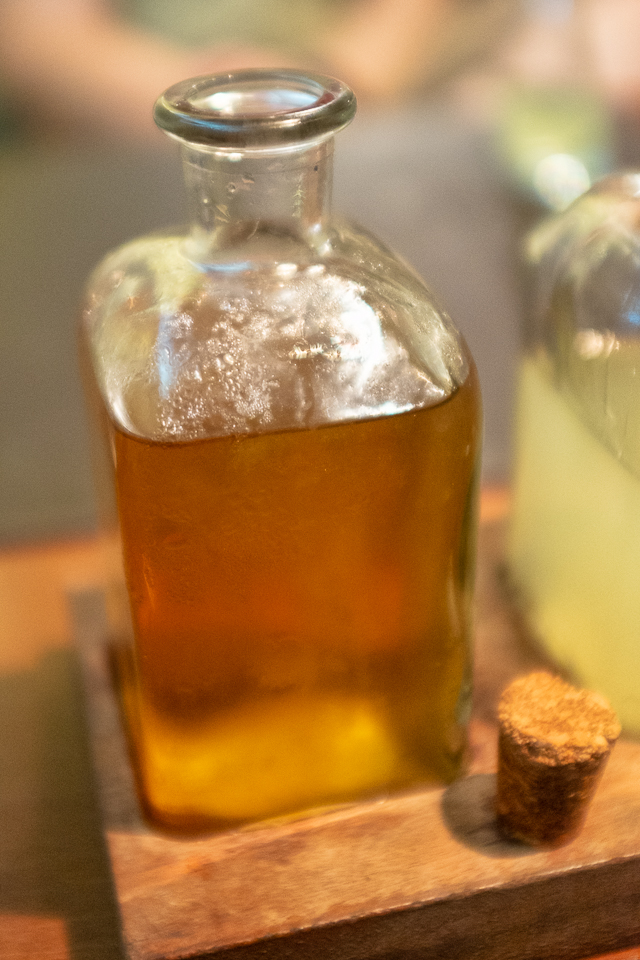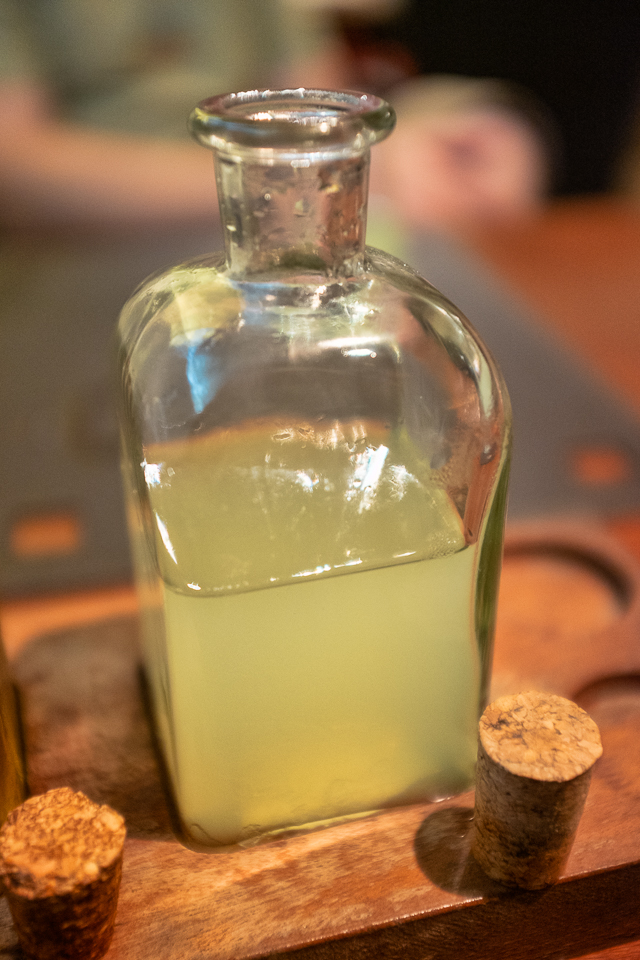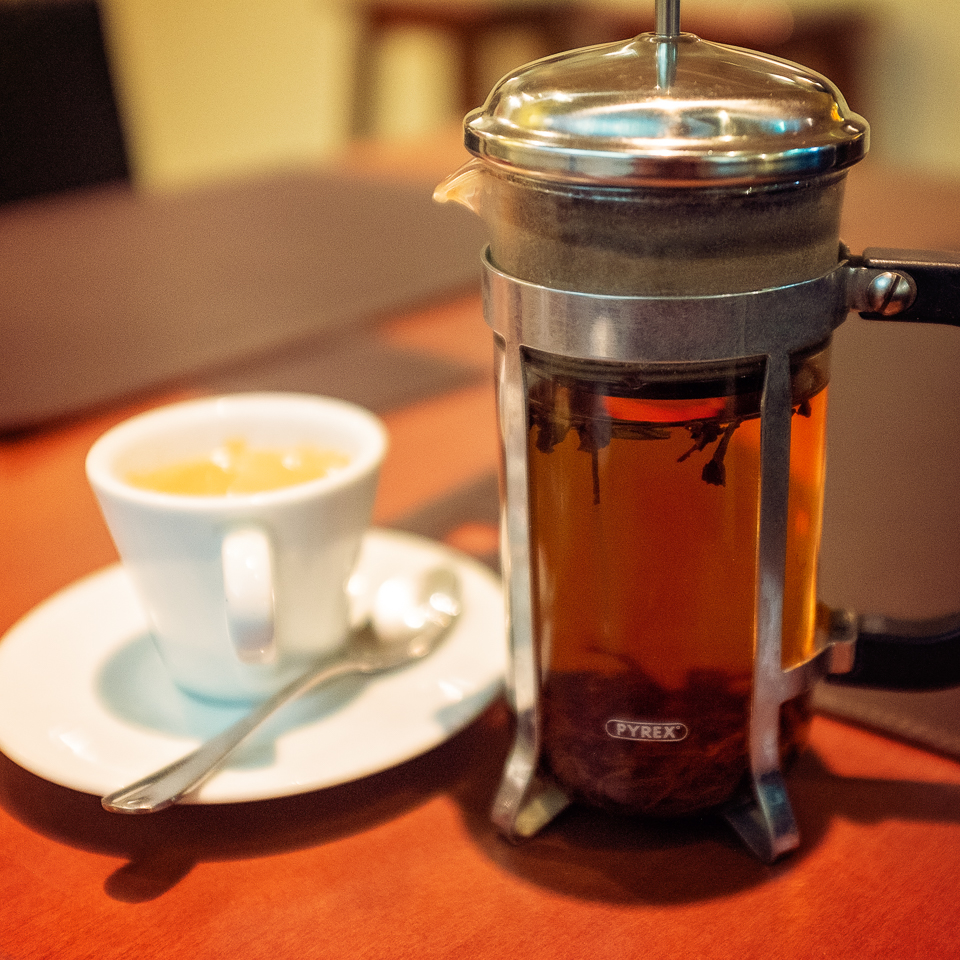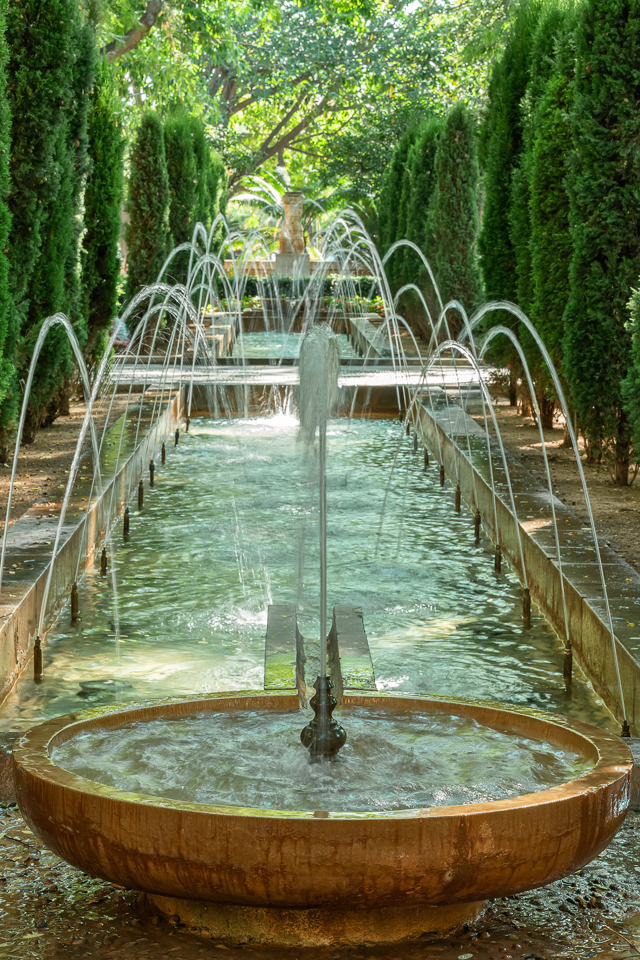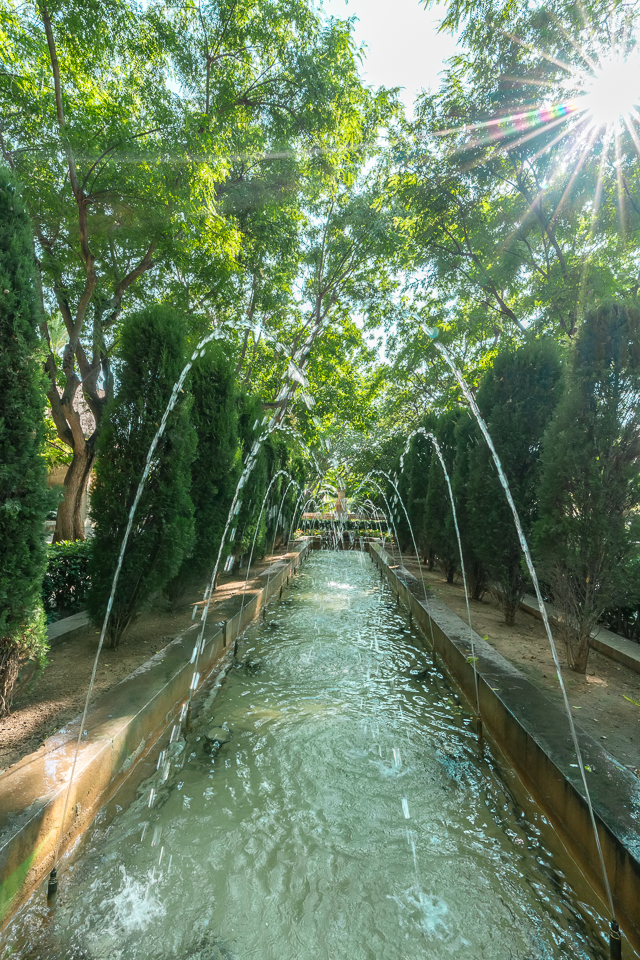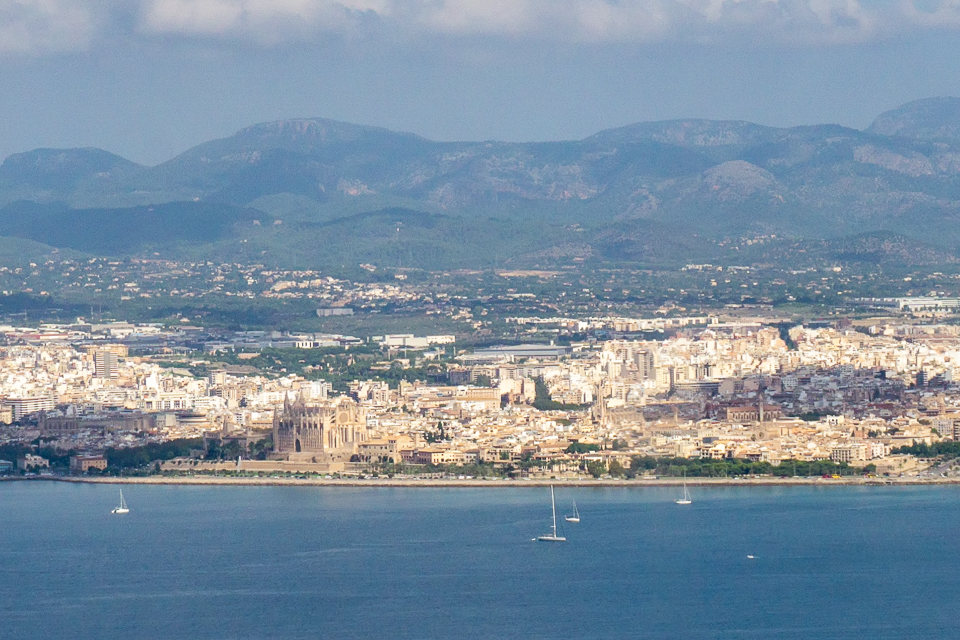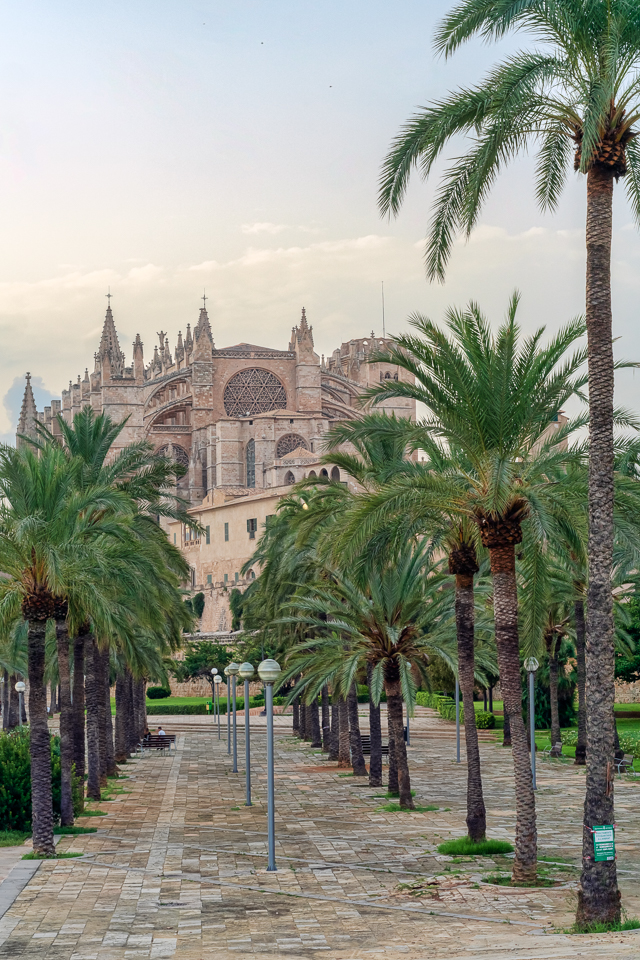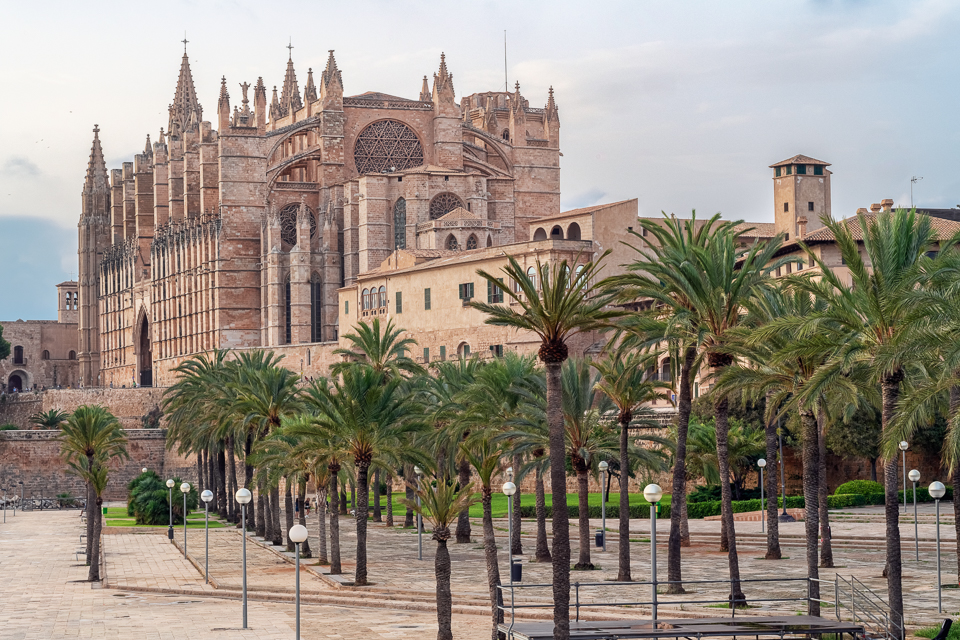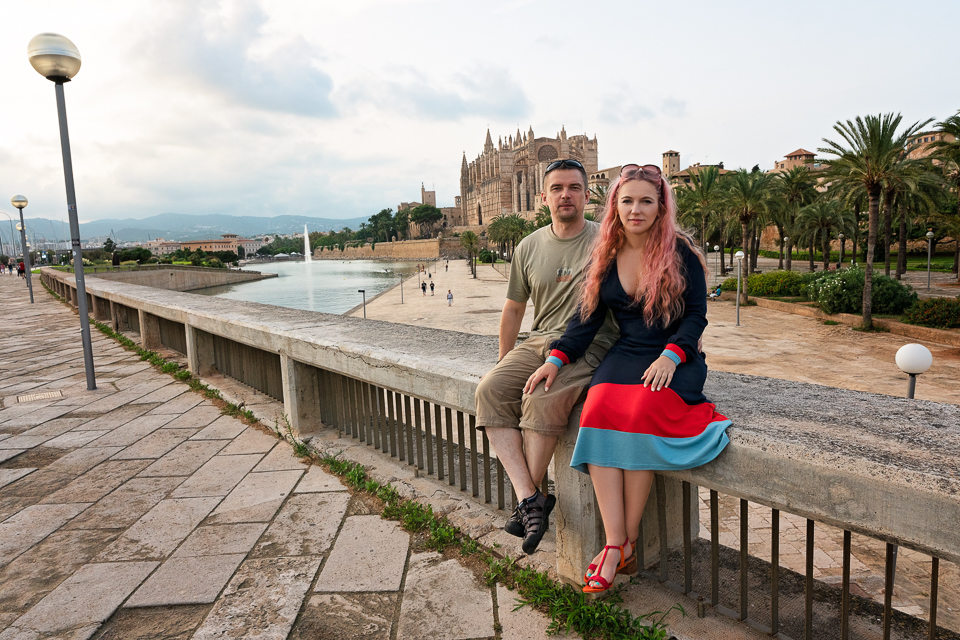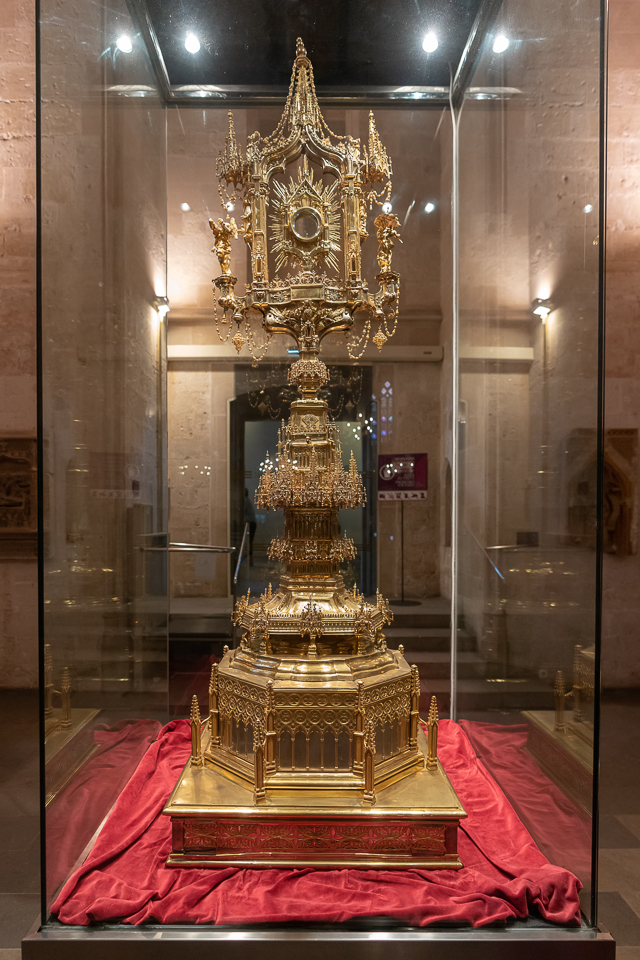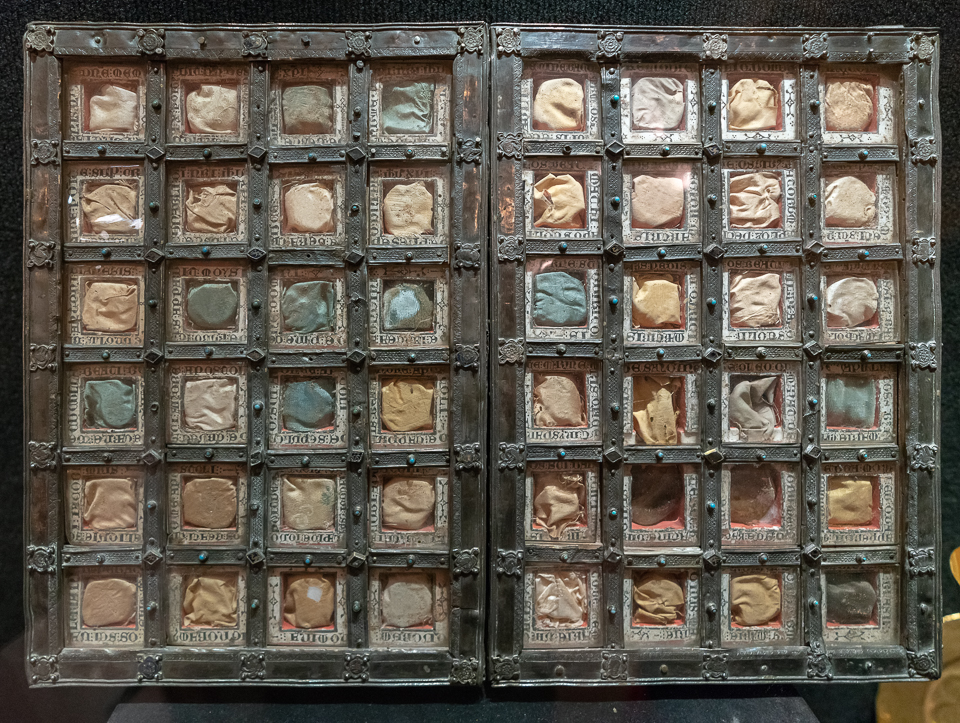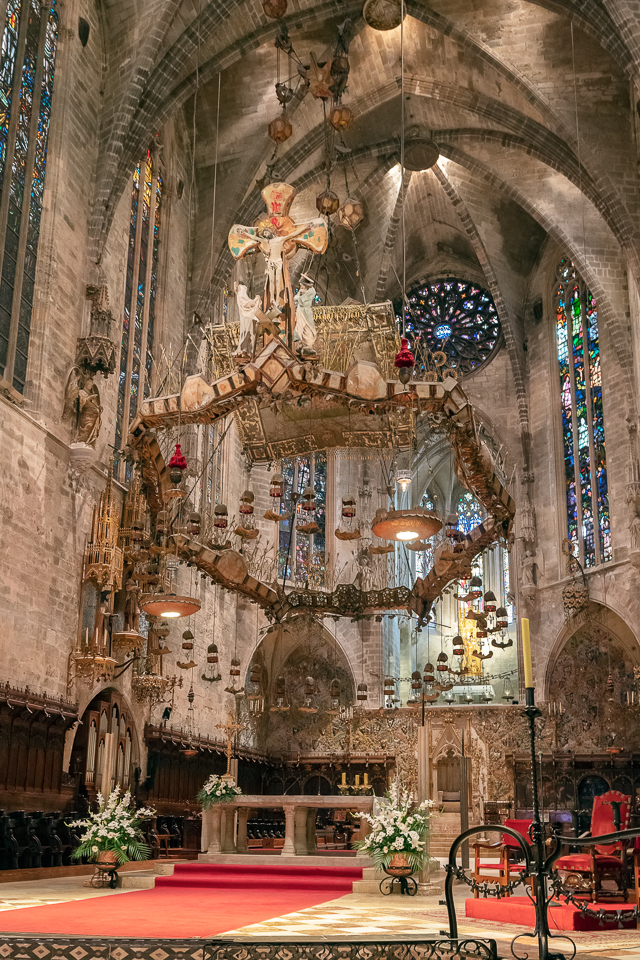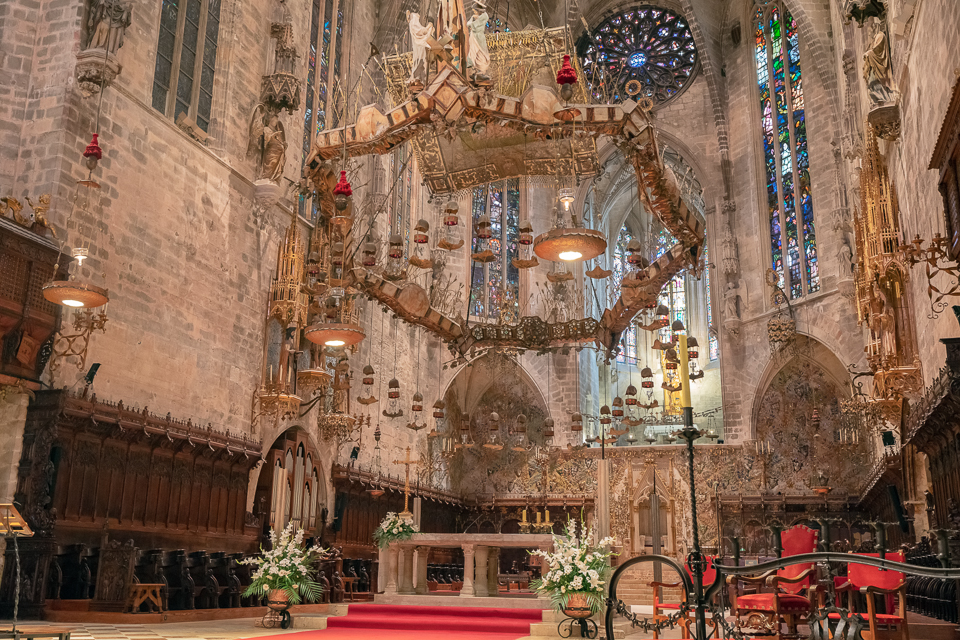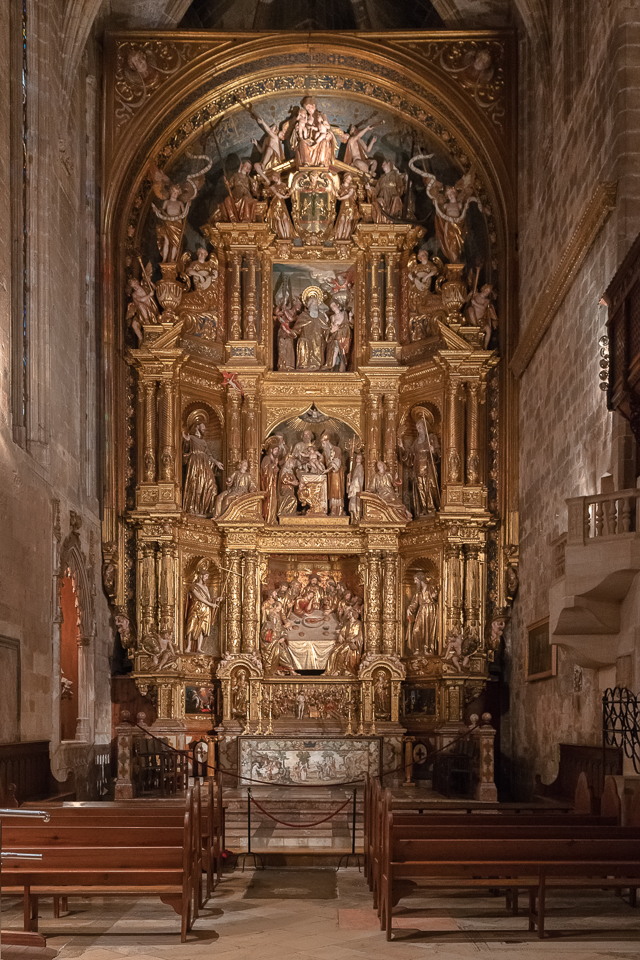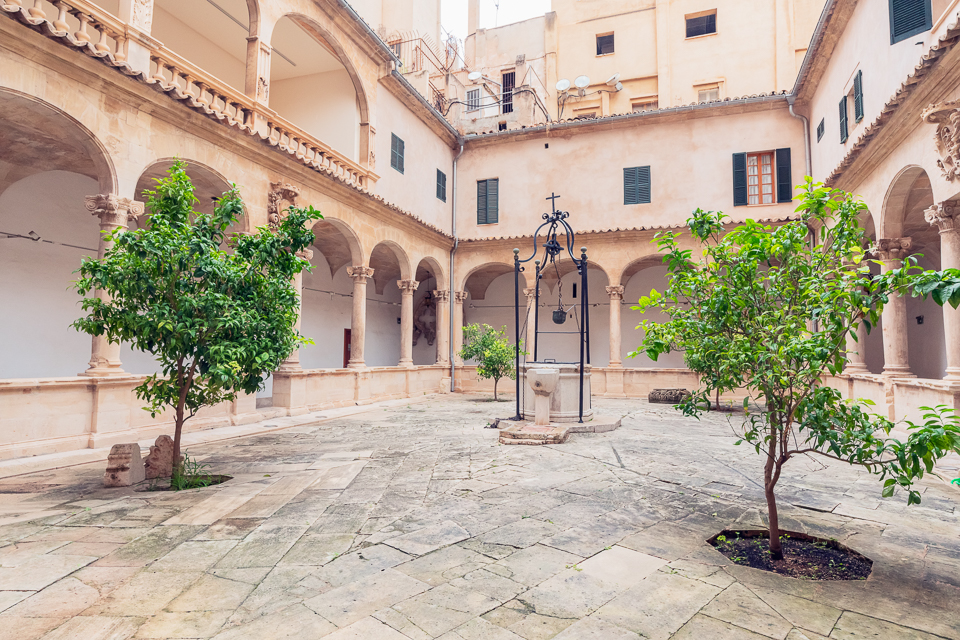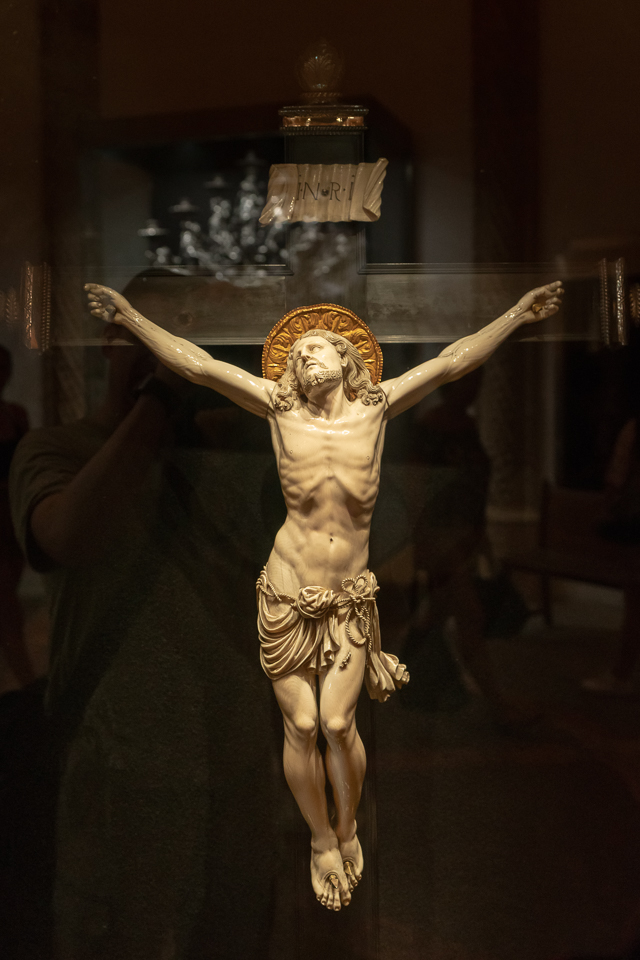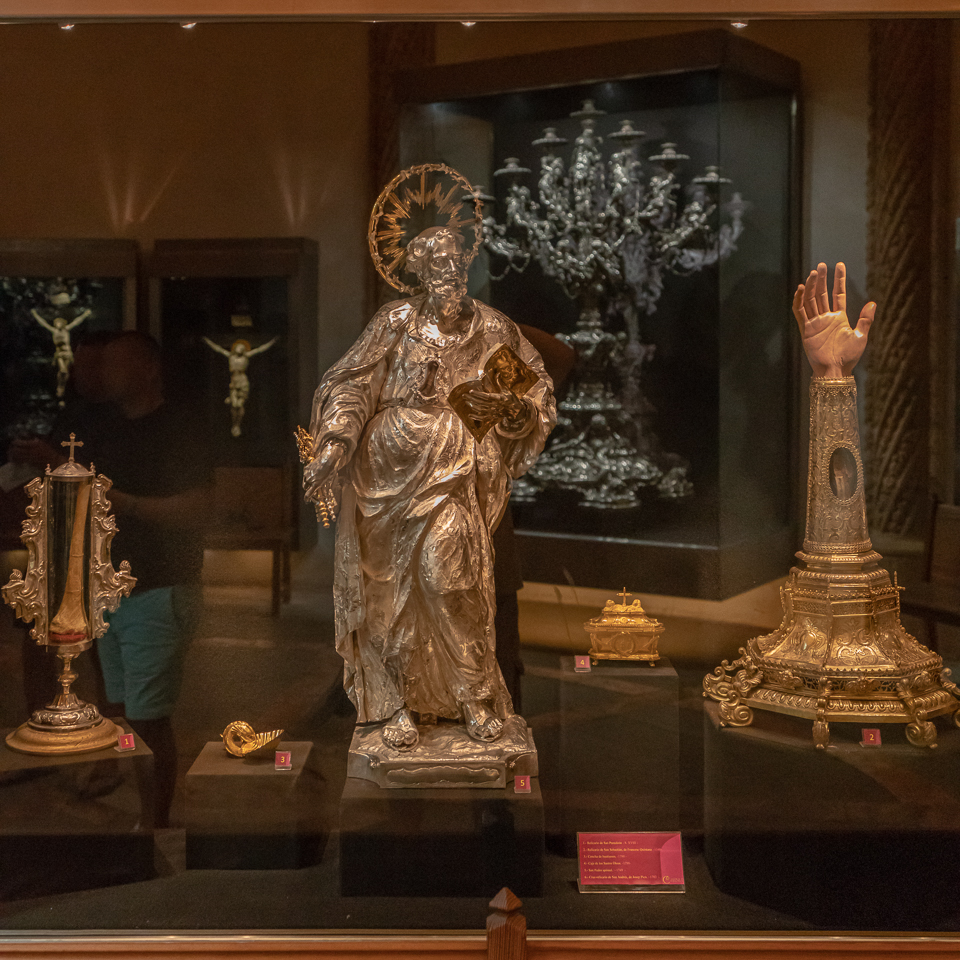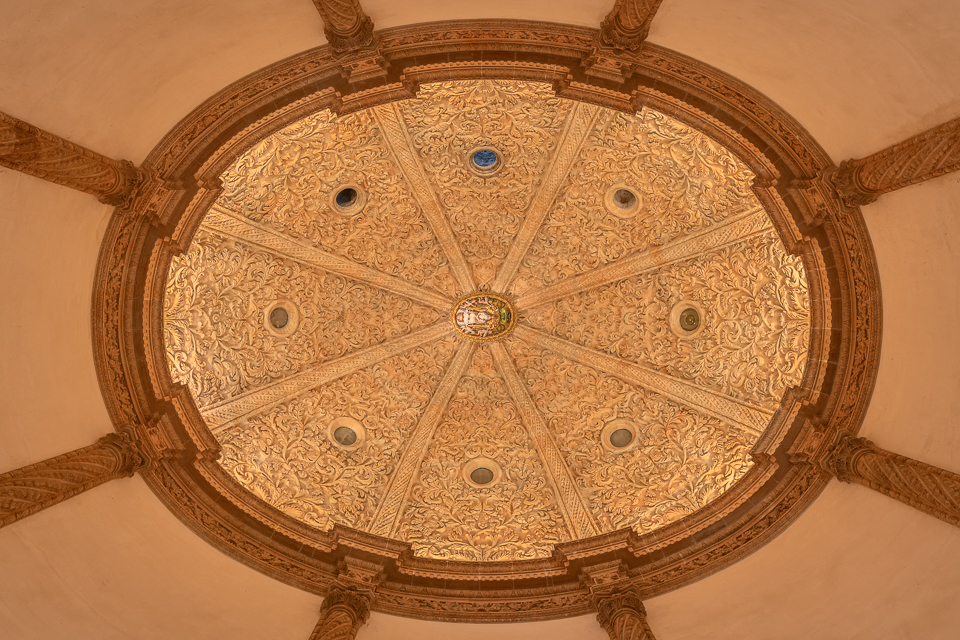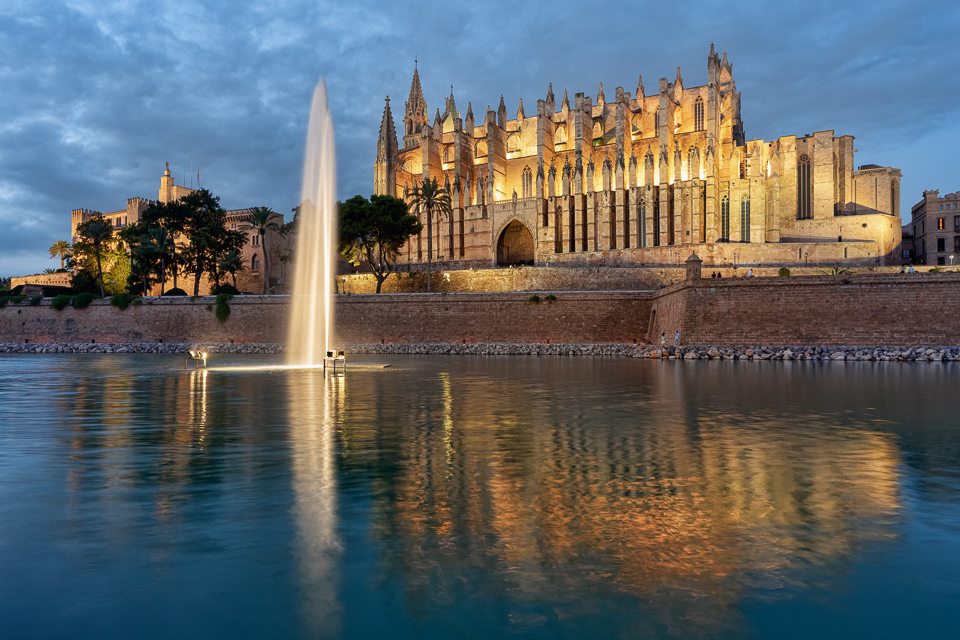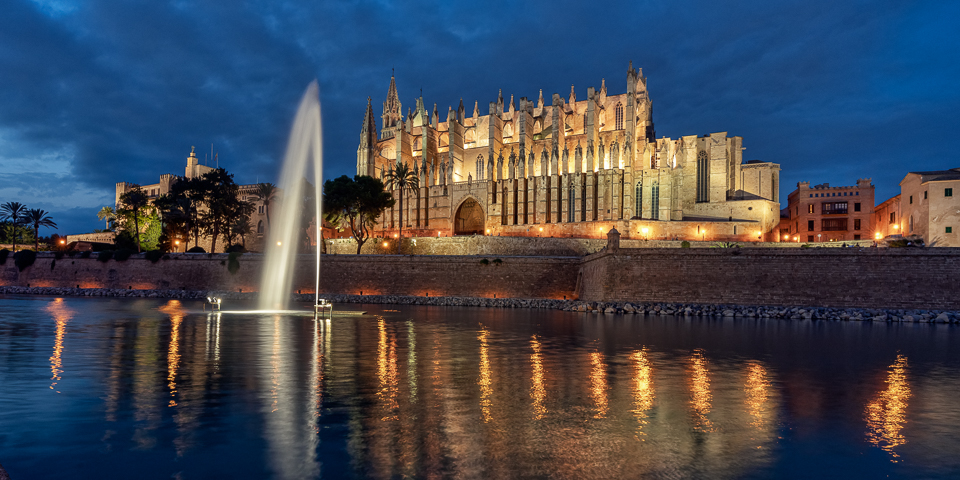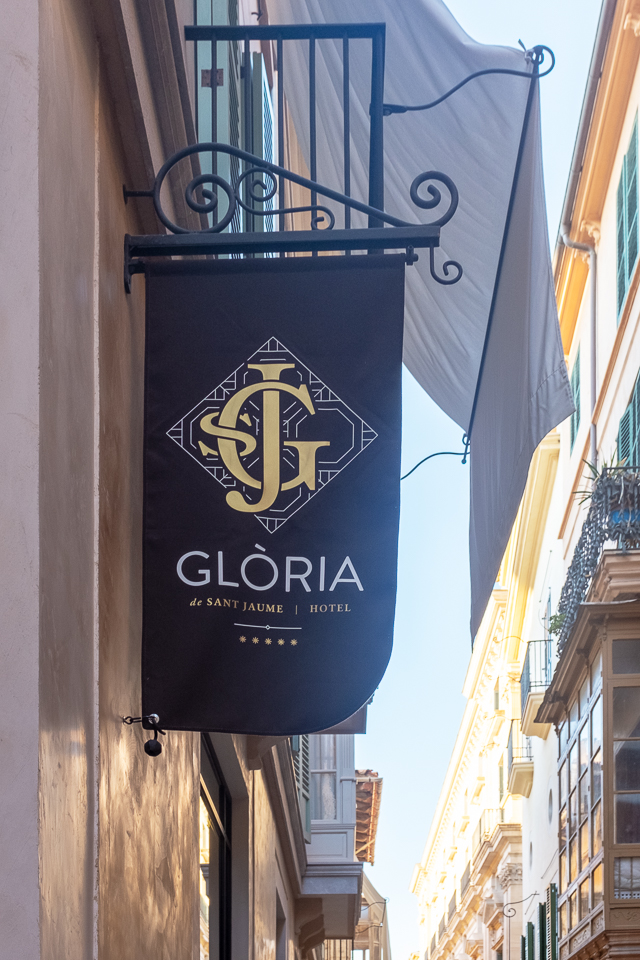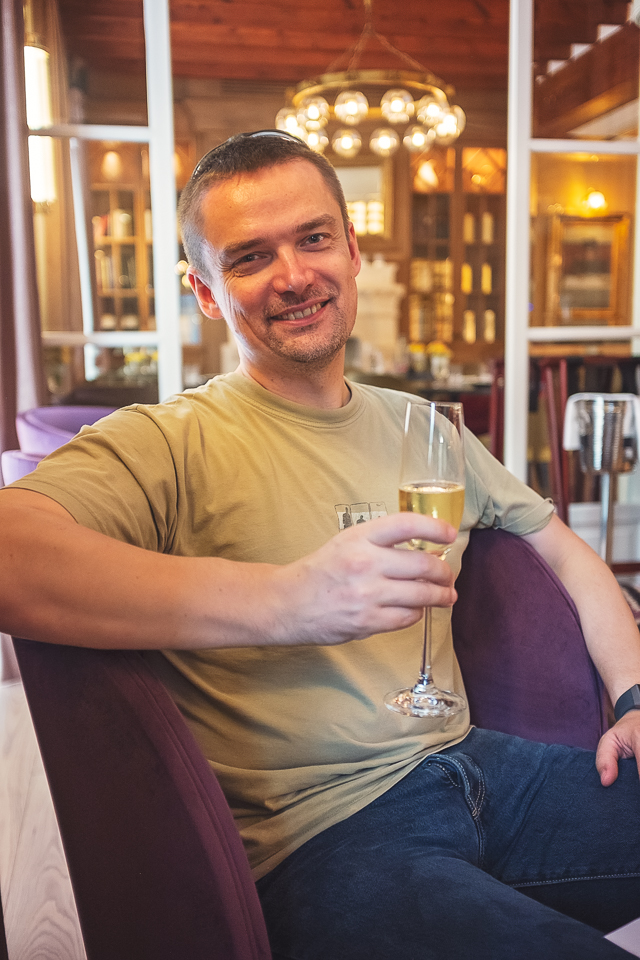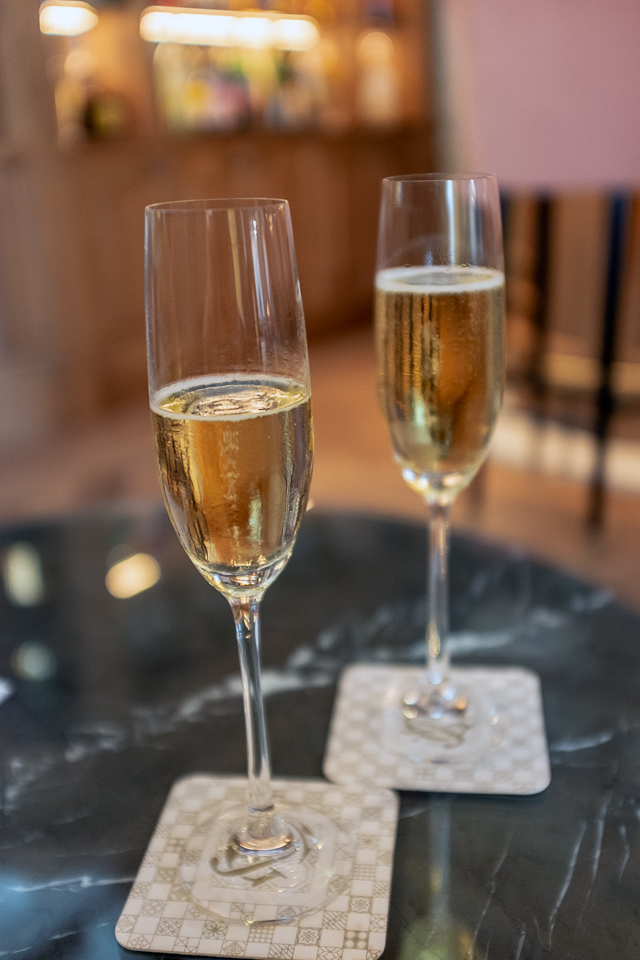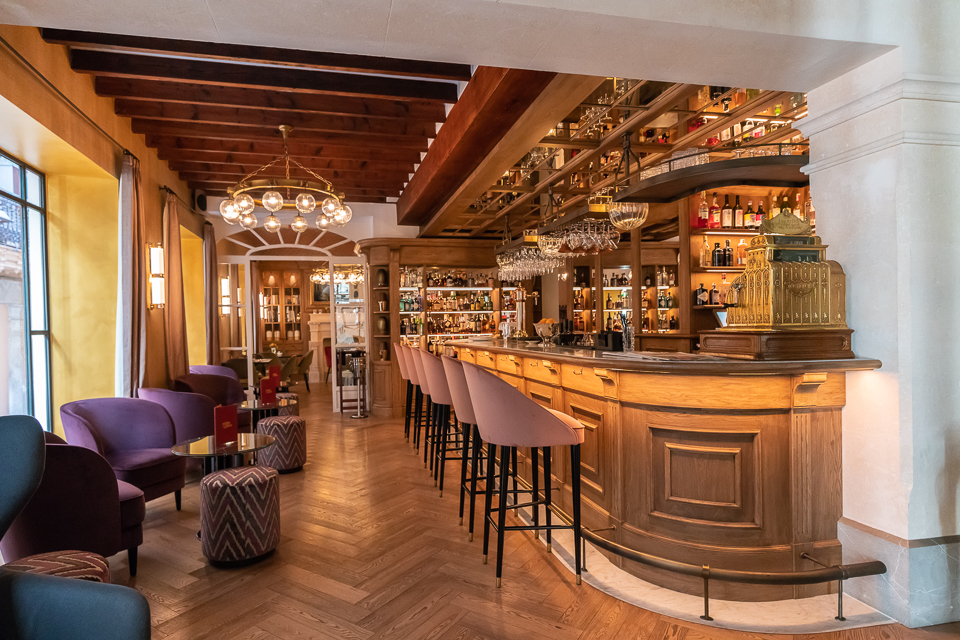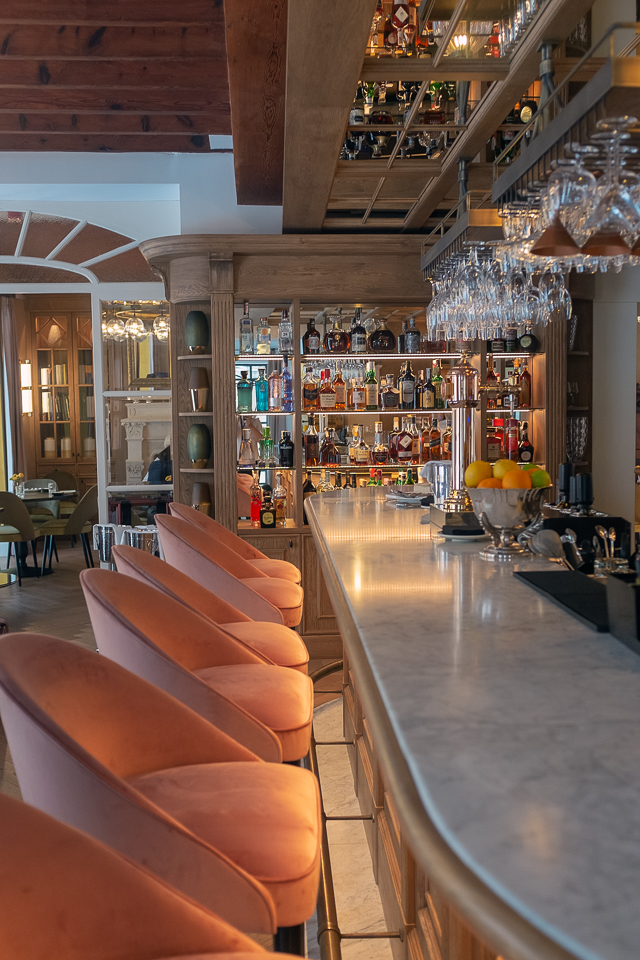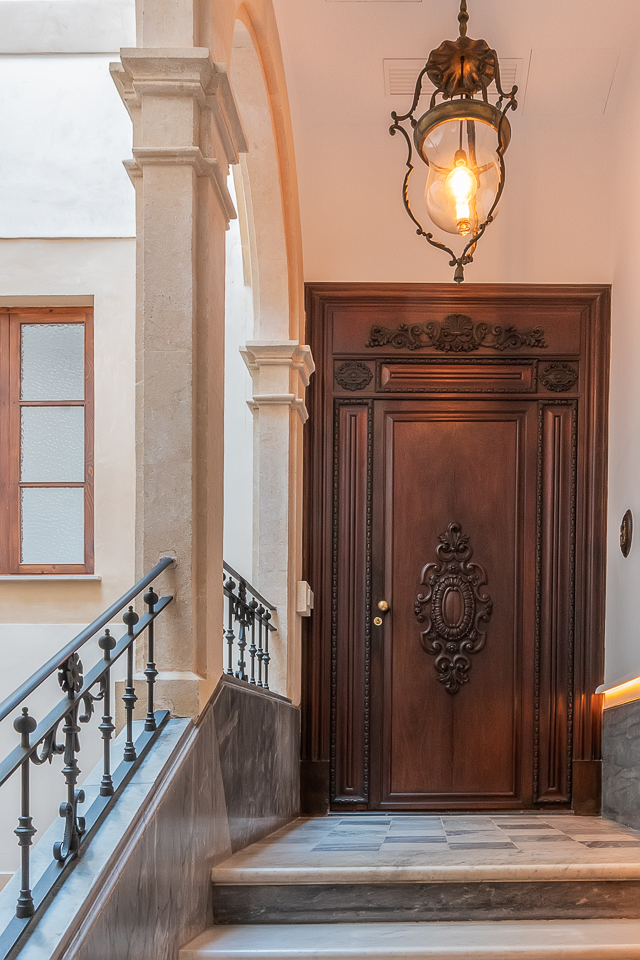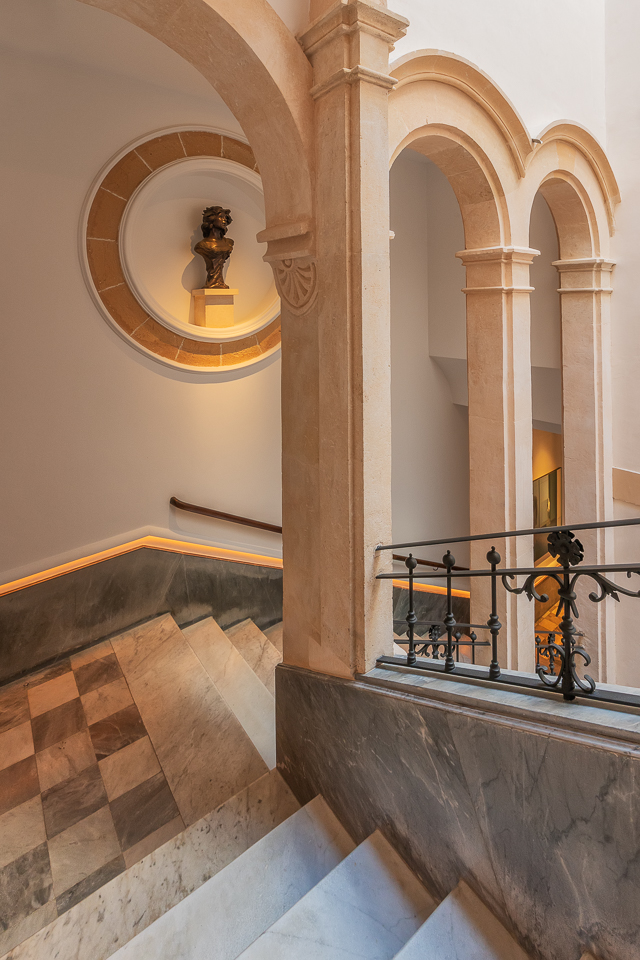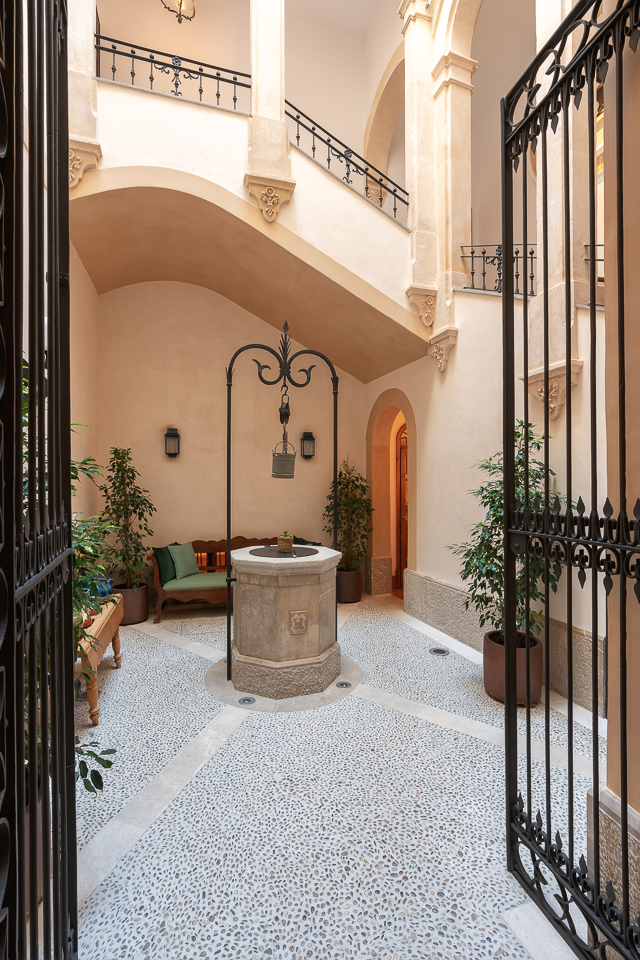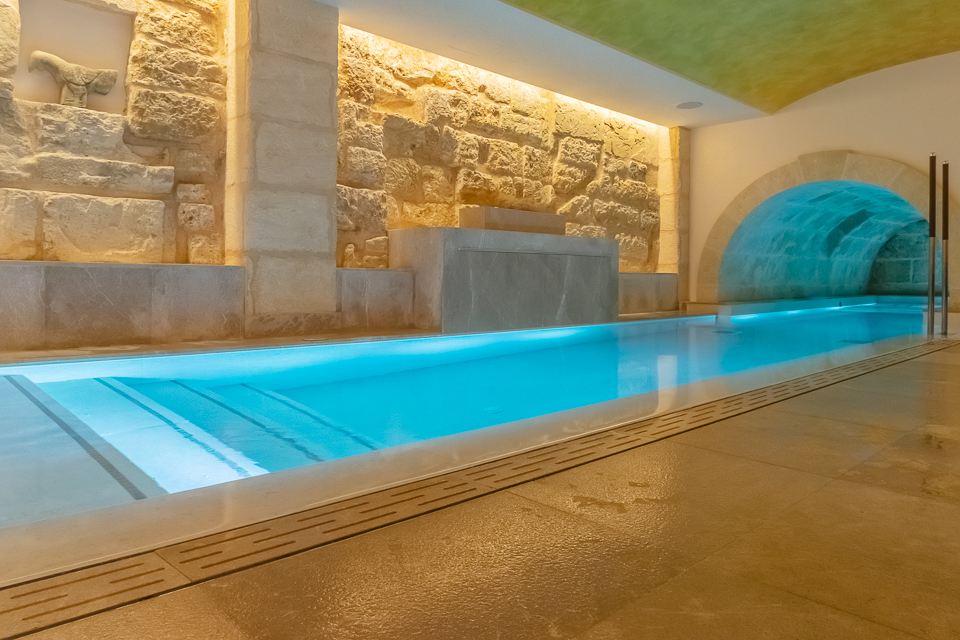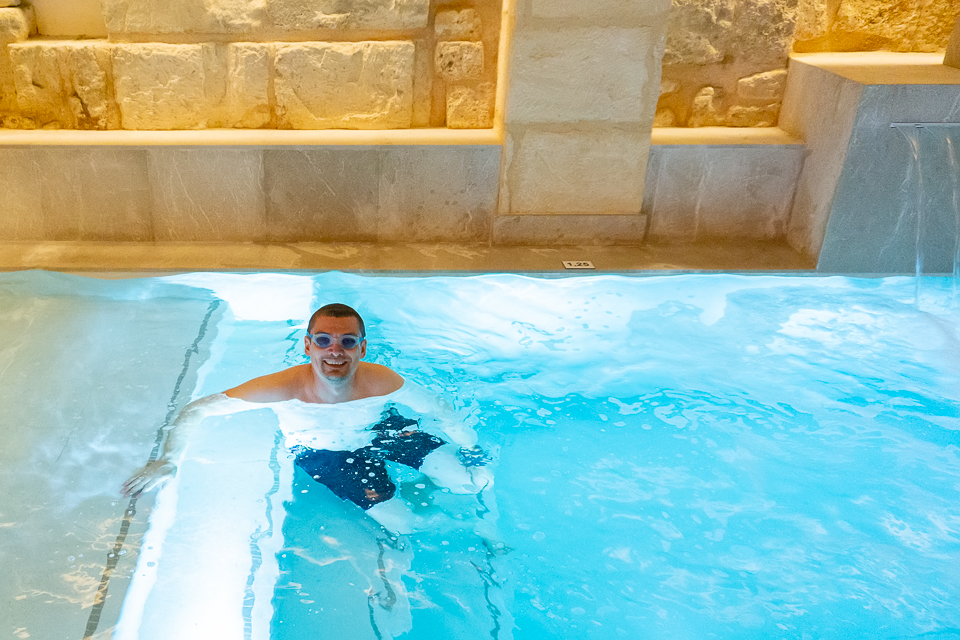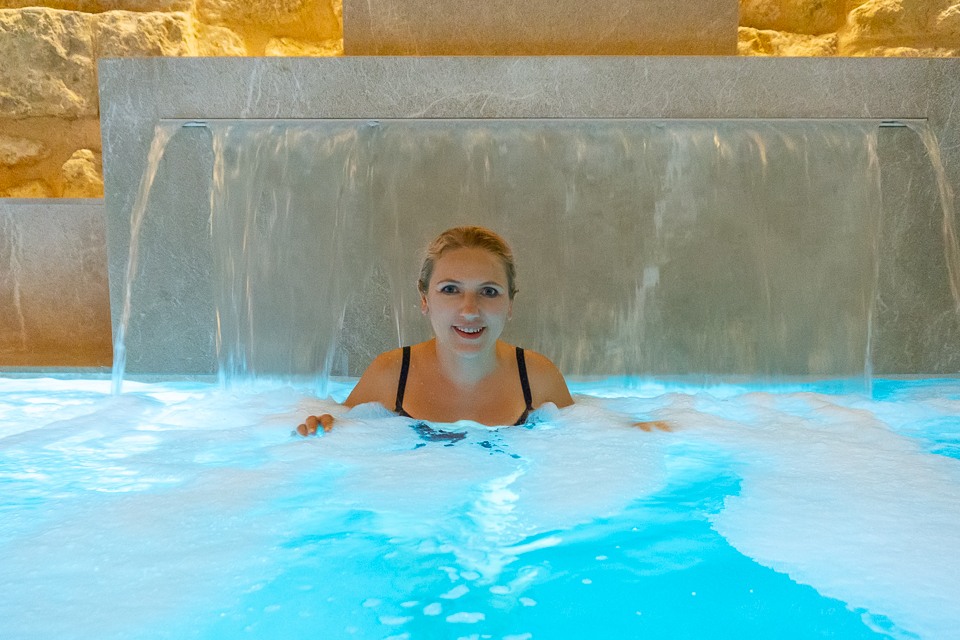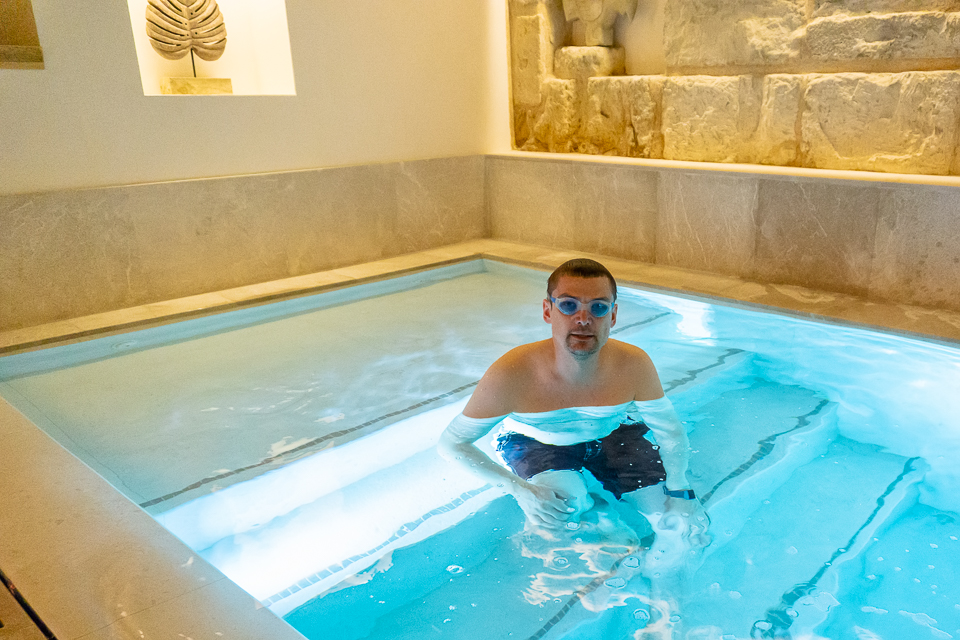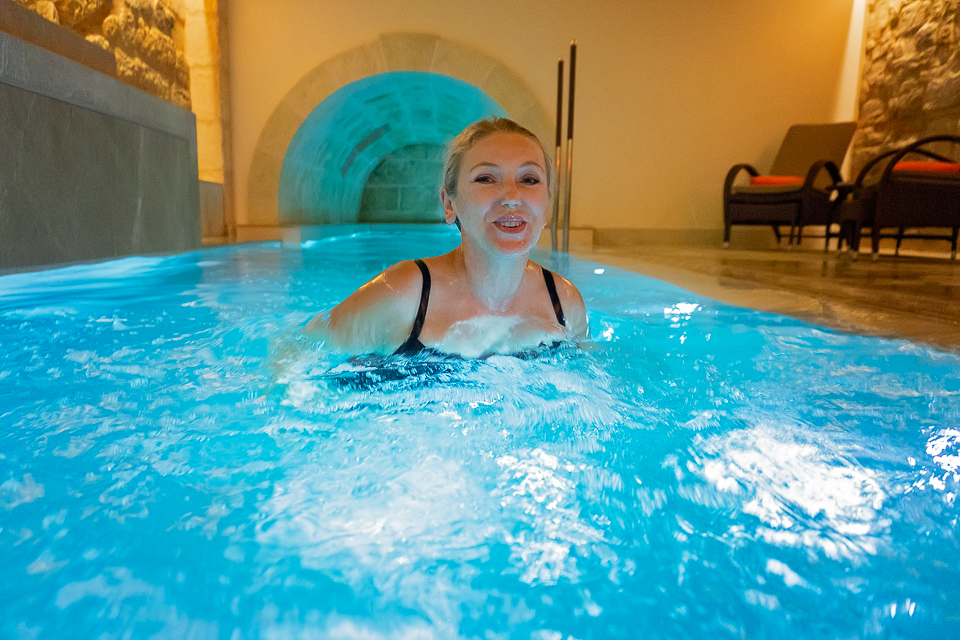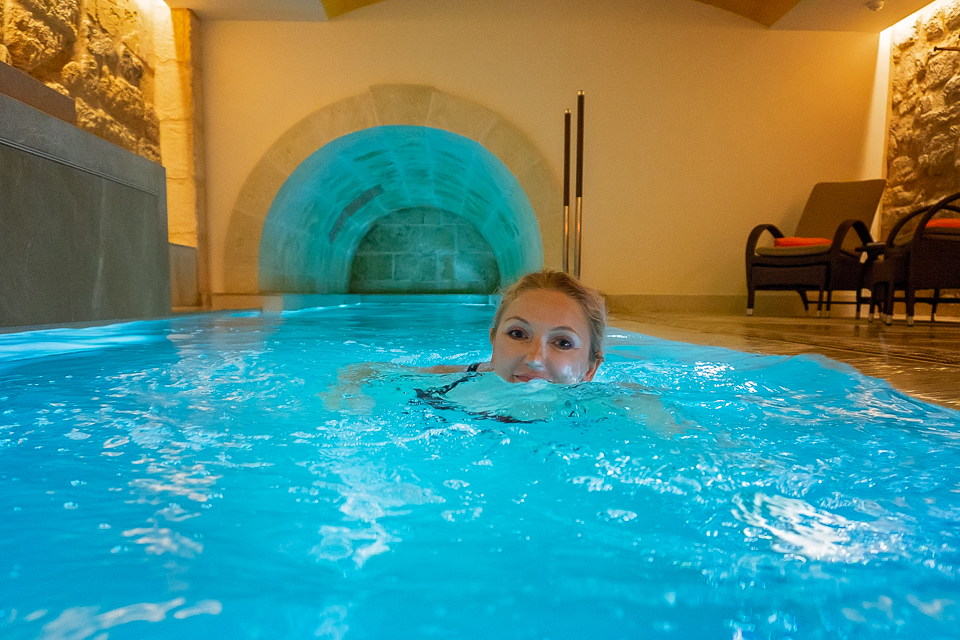It is a long, work-related story, that in unimportant here, but we ended up in Palma de Mallorca for 4 days to enjoy the last days of Summer. I was always afraid I would find Majorca so very touristy, all about cheap food and night life and huge characterless hotels built one next to another, and noisy, and boring. It was never high on my “must to see” list (and this list is anything but short). But I was wrong. Oh, I was right, too, I will give you that, there are a lot of tourists, a lot of hotels, probably a lot of nightlife, but nonentheless I was wrong. I have apologies to make to this island, as I was judging it by the cover. One day spent there was enough for me to change my mind: Majorca is beautiful, charming, full of character, and it is not too difficult to leave the hordes of tourists behind. And it is all about expensive food, not cheap (too expensive sometimes).
Ok, one thing that helped me to see the island from her best is staying in the historic district of Palma. Gloria de Sant Jaume turned out to be a very nice hotel, mixing in good proportions past and presence - preserving some elements of construction originating back in the middle ages and beautifully exposed for guests to admire, some elements from XIX century (beautiful tiles and carved woodwork are just exquisite) and adding to this a splash of semi-luxurious modern simplicity. And in the evening the hotel SPA was waiting for us with its small but lovely swimming pool and sauna to relax and unwind. The bar was lovely, too and the hotel is a short walk from the cathedral. Add to this and a very friendly staff and it all rounds up to a super nice experience.
To jest cała, długa historia, jak wylądowaliśmy pod koniec tego lata na Majorce, ale ona nie jest tutaj najważniejsza. Najważniejsze jest to, że spędziliśmy na wyspie 4 dni, co całkowicie zmieniło naszą (moją szczególnie) opinię na jej temat. Przyznaję się bowiem, że Majorka nigdy nie była wysoko na mojej liście miejsc do odwiedzenia, chociaż lista ta jest prawdopodobnie dłuższa niż Nil i Amazonka razem wzięte. Wydawało mi się zawsze, że Majorka jest wyspą zatłoczoną turystami, tanimi knajpami, wielkimi hotelowymi molochami pozbawionymi jakiejkolwiek osobowości, nastawiona na nocne życie, picie i balangi nad basenem, głośną, nudną i męcząca i że czasy, kiedy jeszcze była urokliwa i piękna dawno już za nią. Jakże się jednak myliłam. Majorka jest, owszem, zatłoczona turystami i jestem w stanie się założyć, że są na niej wielkie hotelowe molochy pozbawione charakteru, tyle, ze my ich w sumie nawet nie widzieliśmy. Widzieliśmy za to Majorkę pełną pięknej architektury i sielankowych krajobrazów, od tłumów uciec było bardzo łatwo, a jak chodzi o tanie knajpy, hmmm, raczej trudno było je znaleźć…
W zobaczeniu Majorki, a zwłaszcza Palmy, od jej najlepszej strony bardzo pomógł fakt, że mieszkaliśmy w historycznej dzielnicy miasta. Zatrzymaliśmy się w hotelu Gloria de Sant Jaume, zajmującym budynek datowany na XVI wiek - część średniowiecznych elementów konstrukcyjnych jest dzisiaj pięknie wyeksponowana, podobnie jak XIX wieczne kafle i elementy rzeźbione w drewnie, widoczne szczególnie na korytarzach pierwszego piętra. Same pokoje były dość proste, ale przyjemne i komfortowe. Hotelowe SPA też jest bardzo przyjemne, z niedużym ale pełnym charakteru basenem i sauną, gdzie mogliśmy zostawić za sobą zmęczenie po dniu zwiedzania. Dodać do tego przyjemny bar, miłą hotelowa obsługę i fakt, że od katedry dzieliło nas kilka minut spaceru wąskimi uliczkami i pięknym, pełnym zieleni deptakiem i czego można chcieć więcej.

